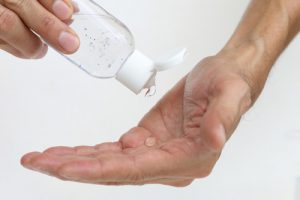Did your STD test return positive for genital warts? You’re certainly not alone! Genital warts are now the most common sexually transmitted disease in the United States.
The good news is genital warts may go away without any treatment at all. Unfortunately, it’s difficult to predict whether you’ll be one of the lucky ones whose warts completely disappear or if you’ll develop a full-blown case of genital warts. If you fall into the latter group, you have several treatment options available for genital wart removal. You and your doctor should determine which option is right for you based on your history and your particular lifestyle.

Here’s a list of available treatments:
Cryotherapy
With this procedure, the doctor uses liquid nitrogen to freeze the wart causing it to eventually fall off. The procedure is quick and can be quite effective, although up to three treatments may be required. There is a small risk of side effects such as ulceration of the treated area and changes in the skin pigmentation. The treatment is also perceived by some to be painful, although it’s well tolerated in most cases. Cryotherapy is usually the first line of therapy due to its effectiveness, lower cost, and quick results.
Electrocautery
This method of treatment for genital warts uses a small probe to deliver a low voltage of electricity to the affected area. This allows the wart to be removed with minimal blood loss and with a success rate of around 90%. You may be given a local numbing agent to make the procedure more comfortable.
Carbon Dioxide Laser
This treatment mode for genital warts uses tightly focused infrared light to attack the wart. This method has its advantages and disadvantages. The advantages are that it can be used to treat larger, thicker warts without affecting the surrounding, normal tissue. Plus, the procedure is usually bloodless. The disadvantage is that this method can be quite costly. For this reason, it’s usually not used as first-line therapy for genital wart removal.
Surgical Excision
If your genital warts are very large, your doctor may suggest excising them surgically. This involves making an incision which may result in postoperative pain and increased healing time.
There are some nonsurgical treatments for genital wart removal. These include:
Application Of Podophyllin

Podophyllin is a resin which is applied directly to the wart by your doctor. It works by disrupting the ability of the virus to reproduce in the skin tissue. Unfortunately, this method is not as effective as some of the previously discussed methods and the return rate of the genital wart is higher. In rare cases, podophyllin may be absorbed into the body causing serious side effects including liver and blood problems. This treatment also tends to be expensive.
Application Of Podophyllotoxin
Podophyllotoxin is a cream or gel you apply yourself twice daily for 3 days in a row, followed by 4 days with no application. This cycle can be repeated for up to a month. Some people clear after four cycles while others require further treatment for genital wart removal.
Application Of Imiquimod
This is another topical cream you apply yourself. It’s applied to genital warts once a day. It’s kept on the lesion overnight and washed off in the morning. This cycle is repeated 3 times per week for 4 months. Side effects are few, but genital warts return after treatment in 20% of cases.
Application Of Trichloracetic Acid
This is a solution that’s applied by your doctor. When it’s applied to the wart, the tissue develops a white, frosty appearance and a burning sensation develops. This method is up to 80% effective but may be associated with ulceration and pain in the treated area.
Use Of Topical Interferon
This treatment is generally only used if the previous treatments fail to clear genital warts, as it tends to be inconsistent and quite expensive.
Final Thoughts
How is a genital wart treatment measure chosen? This should be discussed with your doctor who will select treatment based on the number, location, and size of your genital warts. The cost of treatment will also be taken into consideration if this is a factor for you. It’s important to remember that just because genital warts are removed doesn’t mean you have eradicated the virus from your system. Unfortunately, there’s a good chance you’ll experience a recurrence of your symptoms at some point in the future.
Now that you have a better understanding of genital wart treatment options and modalities for genital wart removal, you can make a more informed decision along with the help of your doctor.
